Irish Brown Bread
There is something about a warm slice of traditional Irish brown bread that just gets me warm and fuzzy. White soda bread is king and always a crowd favorite. However, when we are in Ireland, for me, brown bread is where it’s at. This simple quick bread is easy to whip up, a little bit nutty, and tastes delicious. Serve a warm slice with lashings of cold, Irish butter for breakfast, lunch, or dinner!
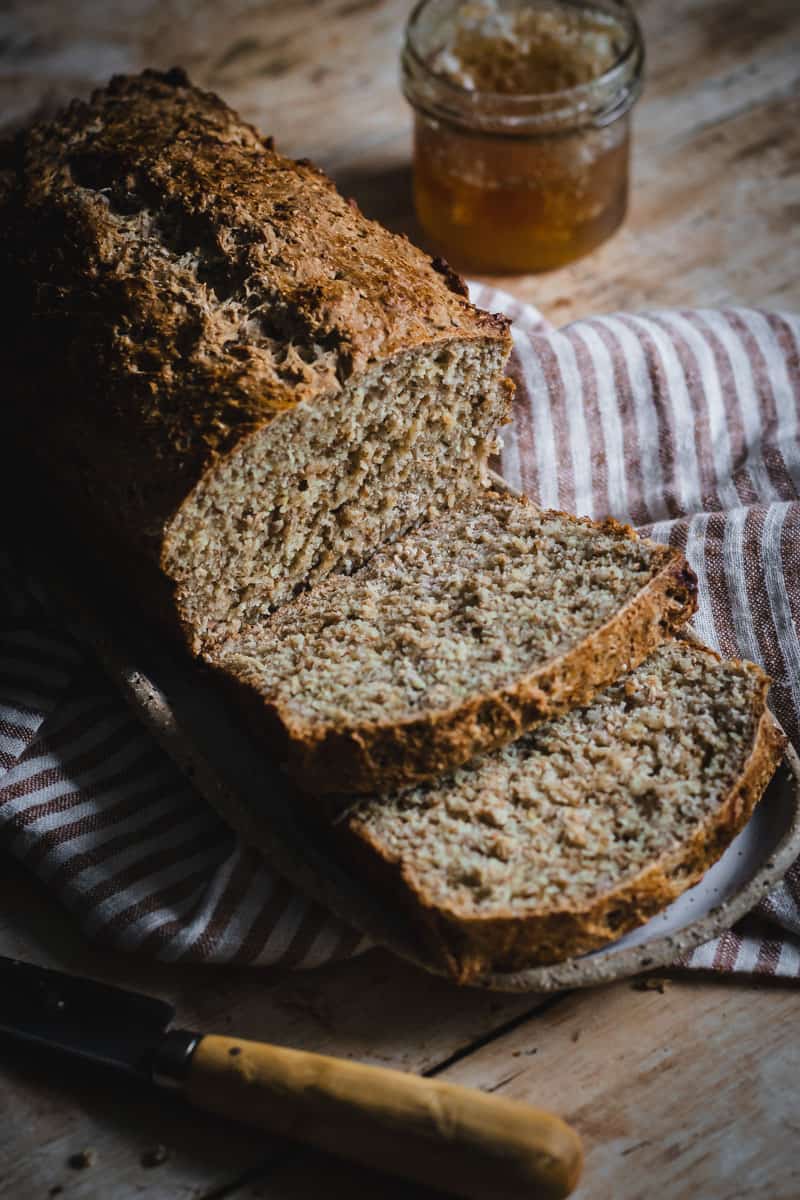
So what is Irish brown bread? Essentially it’s a type of soda bread made with wholemeal flour instead of white flour.
Brown bread has me thinking about blistery days, sitting by the fire in a cozy pub on the west Irish coast. Always hunkered around a bowl of seafood chowder, a slice of brown bread, and a good smear of butter. You could say that I’ve done more than a little research on this over the years!

Here’s what you need to get started
- Plain, all-purpose flour. Don’t bother with bread flour for this recipe, it won’t make any difference to the end result. Plain, white flour will do the job.
- Wholemeal / Whole Wheat Flour. So here’s the secret to a good loaf of Irish brown bread. Irish wholemeal flour is what makes it SO DAMN GOOD. It’s so much coarser than Australian wholemeal flour and when used for baking has a slightly nutty flavor profile. Odlumns Wholemeal flour is my go-to flour for Irish brown bread. In Australia, it’s available in selected supermarkets and from Irish food suppliers.
- Sea salt flakes.
- Baking soda (bicarbonate of soda). The combination of bicarb soda and buttermilk makes this hearty Irish brown bread rise.
- Runny Honey
- Buttermilk – if you don’t have buttermilk on hand, don’t stress. It’s so easy to make from scratch for this recipe. In a measuring jug or small bowl, combine 1 cup of regular whole milk with 1 tbsp lemon juice. Leave for a couple of minutes until it curdles. Now you’ve got buttermilk ready to use!
Variations
Like a soda bread recipe, you can easily make additions like a tablespoon or two of nuts or seeds to this Irish brown bread recipe without affecting the ratios too much. I sometimes add a tablespoon of pumpkin seeds to the mix or a scatter of rolled oats on top of the dough before it hits the oven.
I also really like the density of this recipe. It’s rustic and I love it. To lighten things up a little, try 150g of wholemeal flour and 300g plain flour instead.
The nitty gritty
- Preheat the oven to 200 degrees Celsius. Grease a loaf pan and pop aside.
- In a large bowl, combine all the dry ingredients. Using a whisk, give them a good mix to break up any lumps and aerate the ingredients.
- In a measuring cup/jug, combine the buttermilk and honey. Using a fork, give it a quick mix.
- Make a well in the center of the dry ingredients and add the wet ingredients to the bowl. Using a wooden spoon or spatula, mix all the ingredients together until they are just combined, but no more. It should be a wet and sticky dough, unlike a traditional bread dough.
- Place the dough into the greased loaf pan. Using a spoon dunked in water, smooth out the top of the loaf. With a sharp knife, make a cut on the top of the dough down the center of the loaf.
- Pop the loaf into the preheated oven and bake for 35 minutes or until cooked through and golden on top.
- Remove the dough from the loaf pan and turn out onto a wire rack to let the bread cool. You can tell when a loaf of fresh bread is cooked when you tap on the base and get a hollow sound.
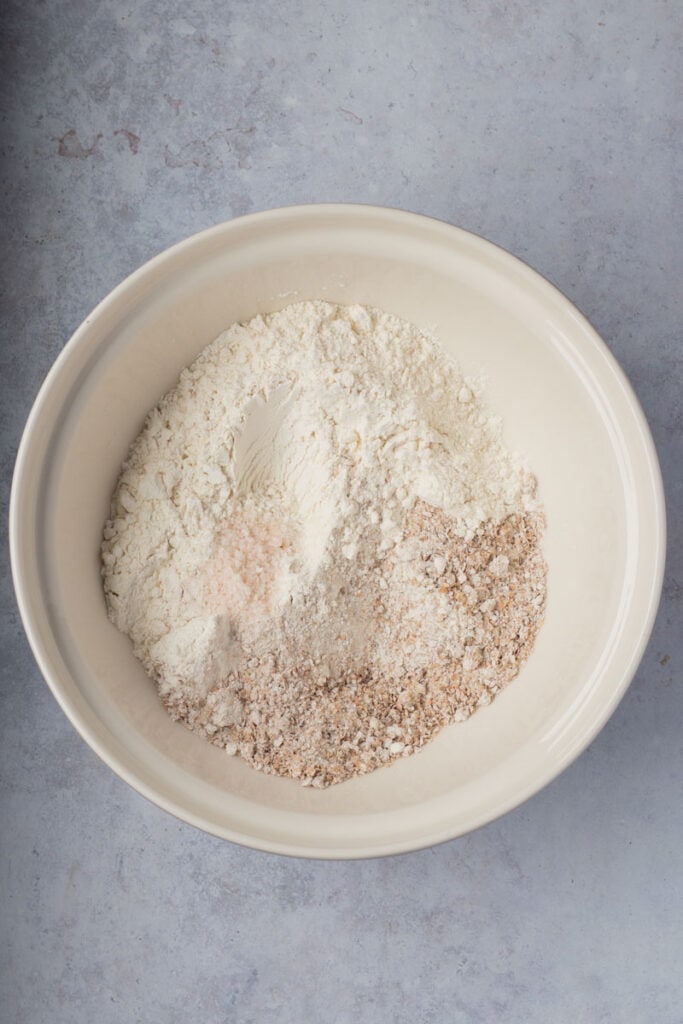

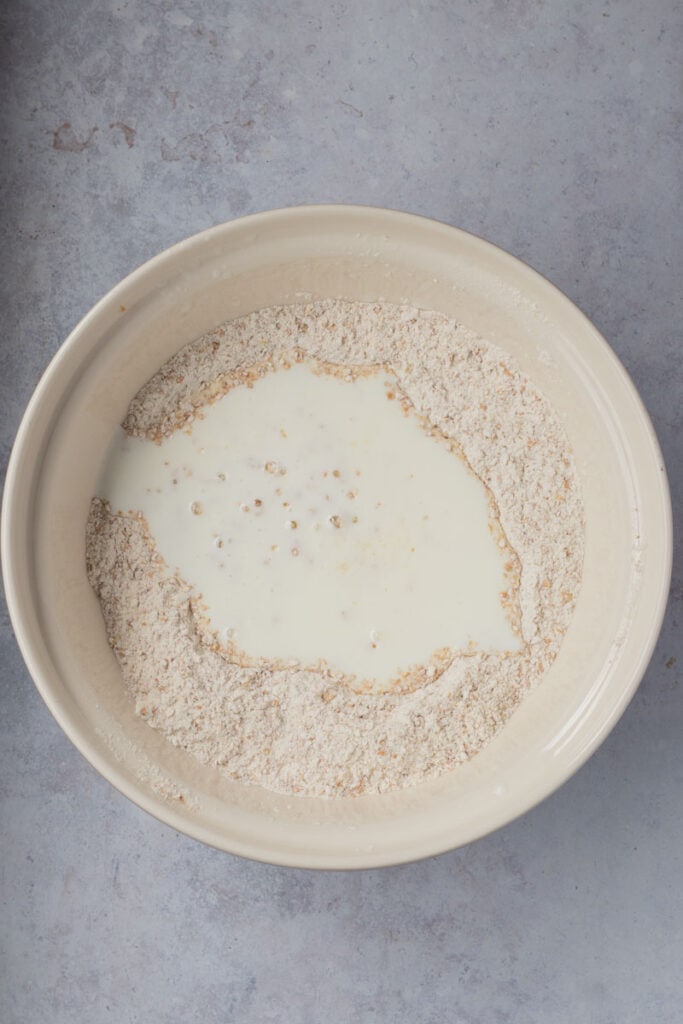
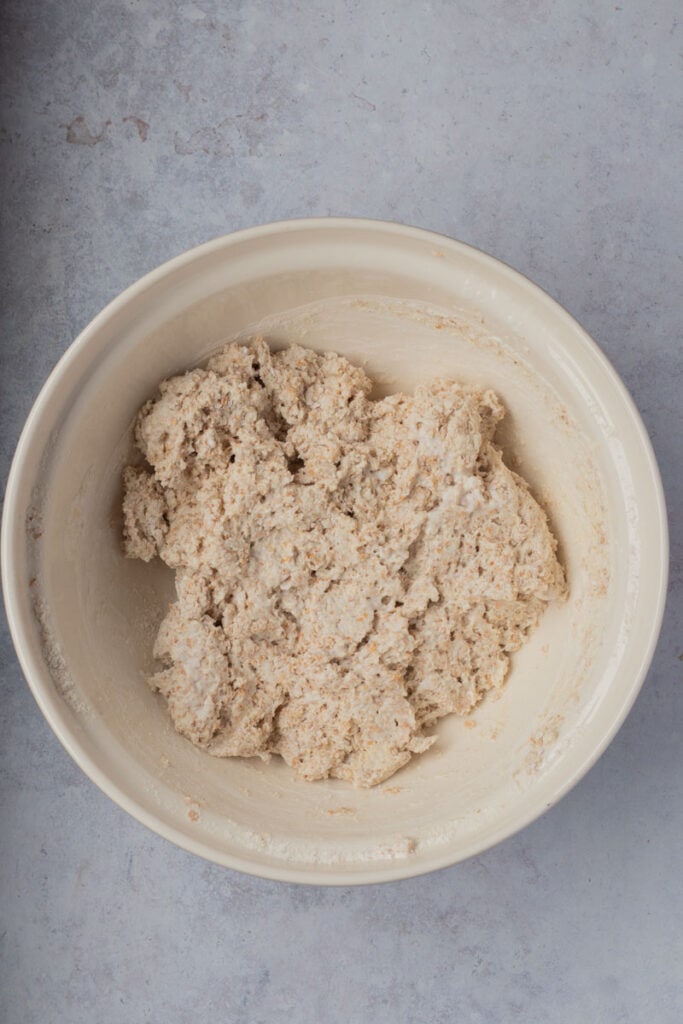
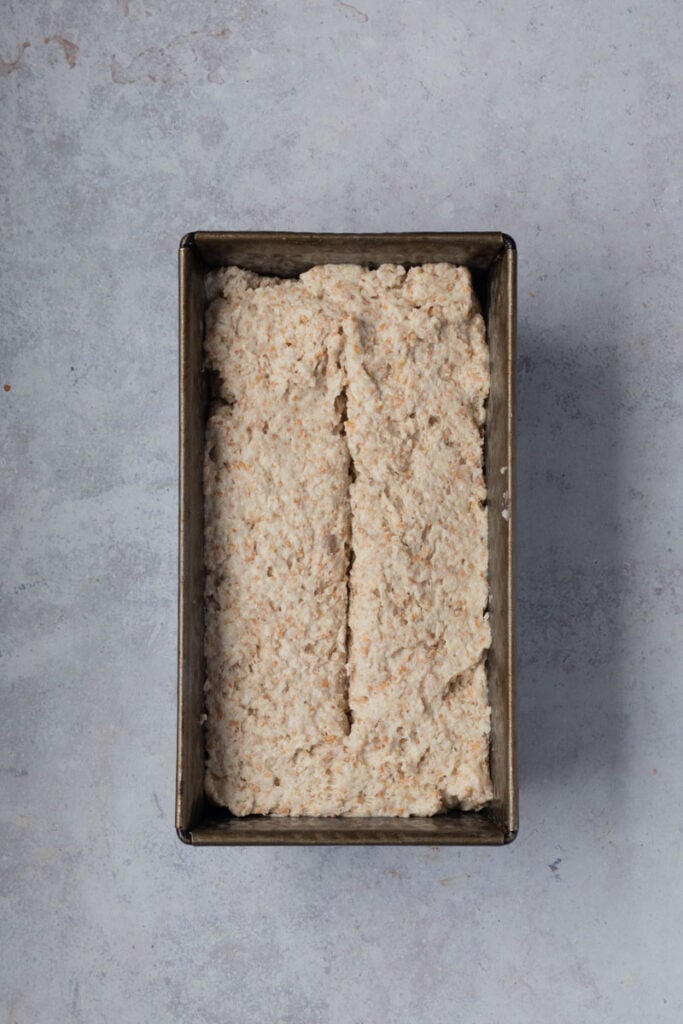
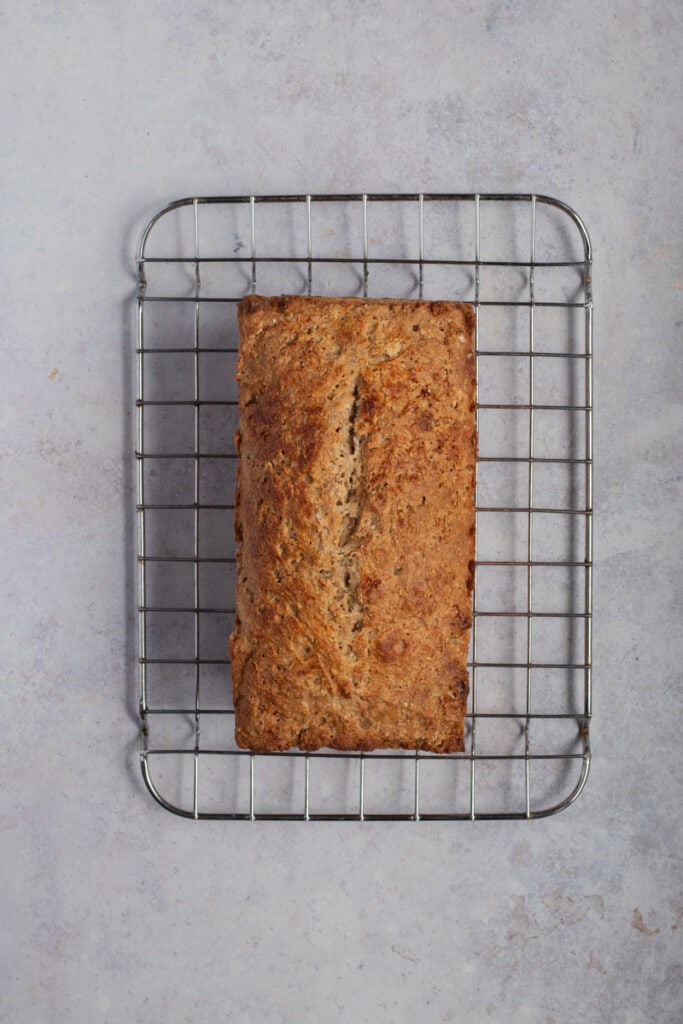
Cooks notes
I don’t line my bread tins for bread making. If you have a good quality, non-stick loaf pan I have never found that I need to line them with parchment paper when making bread loaves.
Can I cook this as a freeform loaf?
If you would prefer a freeform loaf as opposed to a bread tin-shaped loaf, here’s how. Firstly, you need to reduce the amount of liquid ingredients as this recipe is meant for a bread tin. Use 360ml of buttermilk instead of 400ml. Check out this traditional Irish soda bread recipe on how to make a freeform loaf. Follow from step 4, to mix your dough and then turn it onto a floured surface, shaping, scoring, and then popping it in a Dutch oven and baking.
How to eat brown bread
Smothered in Irish butter and alongside a bowl of soup is how you’ll find Irish brown bread in pubs scattered across Ireland.
Don’t save this one for St Patrick’s Day, it’s an easy quick bread that can be whipped up on weekends to go on a good Sunday morning full Irish breakfast alongside bacon, eggs, and all the good breakfast bits!
Alongside your favorite stew. This Irish stew always loves to be soaked up with a slice of bread.
Toast a slice and smear it with honey or your best homemade jam like this triple berry jam.
Storage
This authentic Irish brown bread recipe is best eaten warm, just out of the oven on the day that it’s made. While it can definitely be eaten the next day it’s not nearly as fresh. I find toasting it brings it back to life and makes it edible for the next few days – that’s if a loaf lasts that long! To store, keep in an airtight container or, covered with plastic wrap at room temperature.
Love bread and dough recipes? Here try these ones…
- Easy pizza dough
- Ham, cheese and caramelised onion scrolls
- Irish bacon and cheddar soda bread
- Bacon and cheese skillet rolls
- Quick and Easy Porridge Bread
Happy bread baking!
x
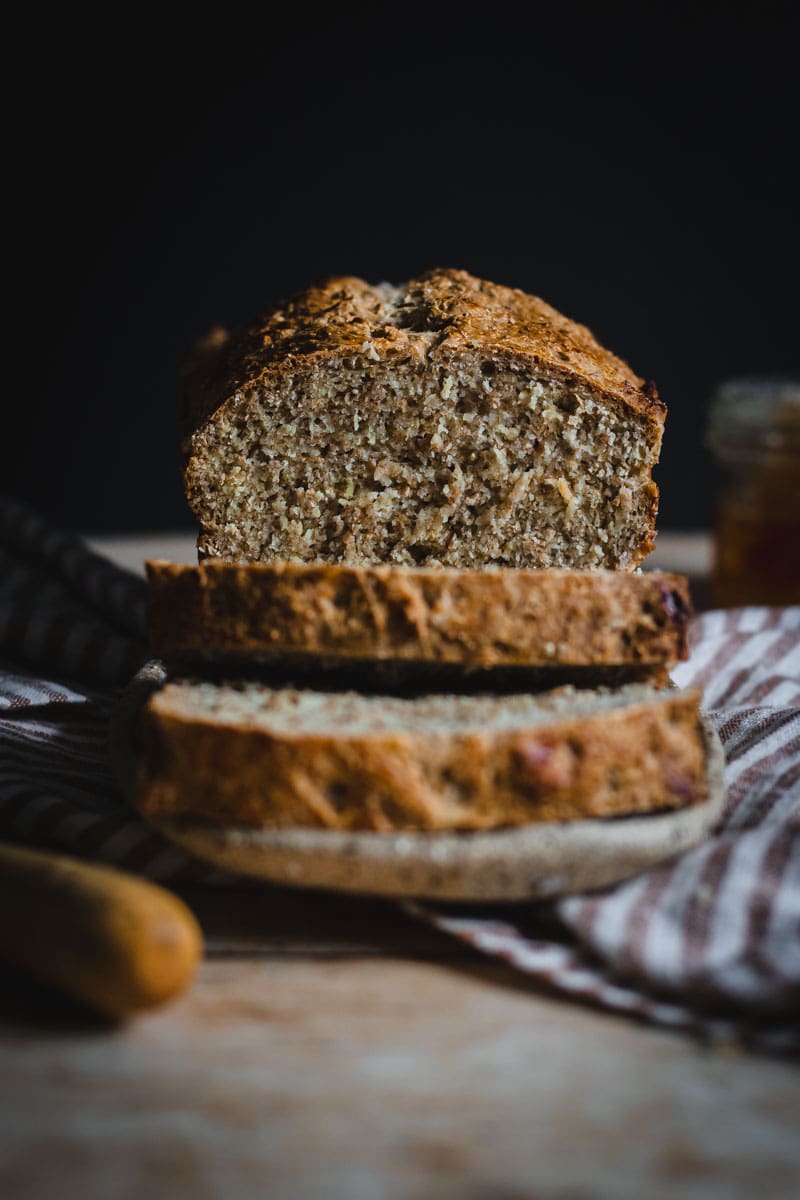
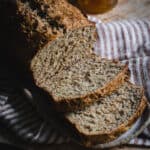
Irish Brown Bread
- Prep Time: 10 minutes
- Cook Time: 35 minutes
- Total Time: 45 minutes
- Yield: 1 loaf 1x
- Category: Side Dish
- Method: Baking
- Cuisine: Irish
Description
This Irish Brown bread recipe has me thinking about blistery coastal days perched by a fire, a pot of seafood chowder, & brown bread smothered with butter.
Ingredients
- 250g plain flour
- 200g coarse wholemeal flour
- 2 tsp sea salt flakes
- 1 tsp bicarbonate soda
- 1 tbsp runny honey
- 400ml buttermilk
Instructions
- Preheat the oven to 200 degrees celcius. Grease a loaf pan and pop aside.
- In a large bowl, combine all the dry ingredients. Using a whisk, give them a god mix to break up any lumps and aerate the ingredients.
- In a measuring cup / jug, combine the buttermilk and honey. Using a fork, give it a quick mix.
- Make a well in the center of the dry ingredients and add the wet ingredients to the bowl. Using a wooden spoon or spatula, mix all the ingredients together until they are just combined, but no more. It should be a wet and sticky dough, unlike a tradtional bread dough.
- Place the dough into the greased loaf pan. Using a spoon dunked in water, smooth out the top of the loaf. With a sharp knife, make a cut on the top of the dough down the center of the loaf.
- Pop the loaf into the preheated oven and bake for 35 minutes or until cooked through and golden on top.
- Remove the dough from the loaf pan and turn out onto a wire rack to let the bread cool. You can tell when a loaf of fresh bread is cooked when you tap on the base and get a hollow sound.
Notes
I don’t line my bread tins for bread making. If you have a good quality, non-stick loaf pan I have never found that I need to line them with parchment paper when making bread loaves.
If you would prefer a freeform loaf as opposed to a bread tin-shaped loaf, here’s how. Firstly, you need to reduce the amount of liquid ingredients as this recipe is meant for a bread tin. Use 360ml of buttermilk instead of 400ml. Check out this traditional Irish soda bread recipe on how to make a freeform loaf. Follow from step 4, to mix your dough and then turn it onto a floured surface, shaping, scoring, and then popping it in a Dutch oven and baking.
Nutrition
- Serving Size:
- Calories: 239
- Sugar: 4.9 g
- Sodium: 794.3 mg
- Fat: 2.6 g
- Carbohydrates: 46.5 g
- Protein: 8.2 g
- Cholesterol: 5.7 mg

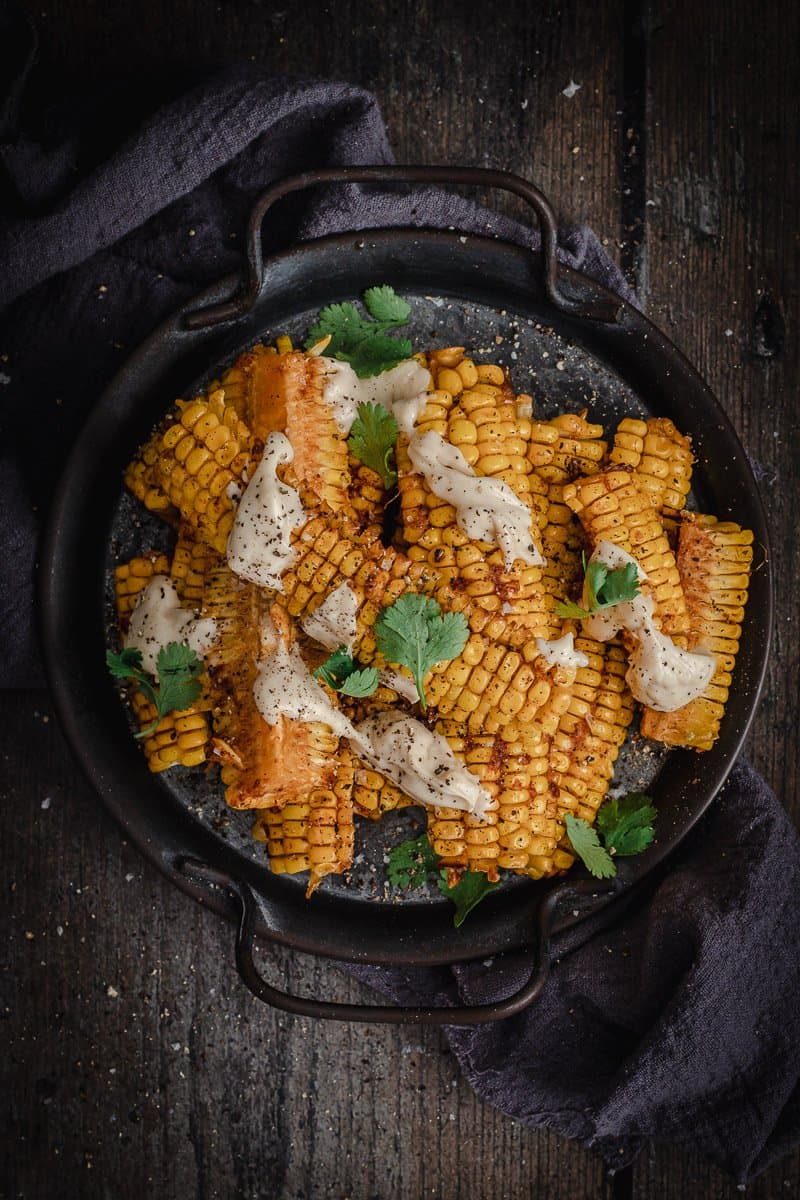
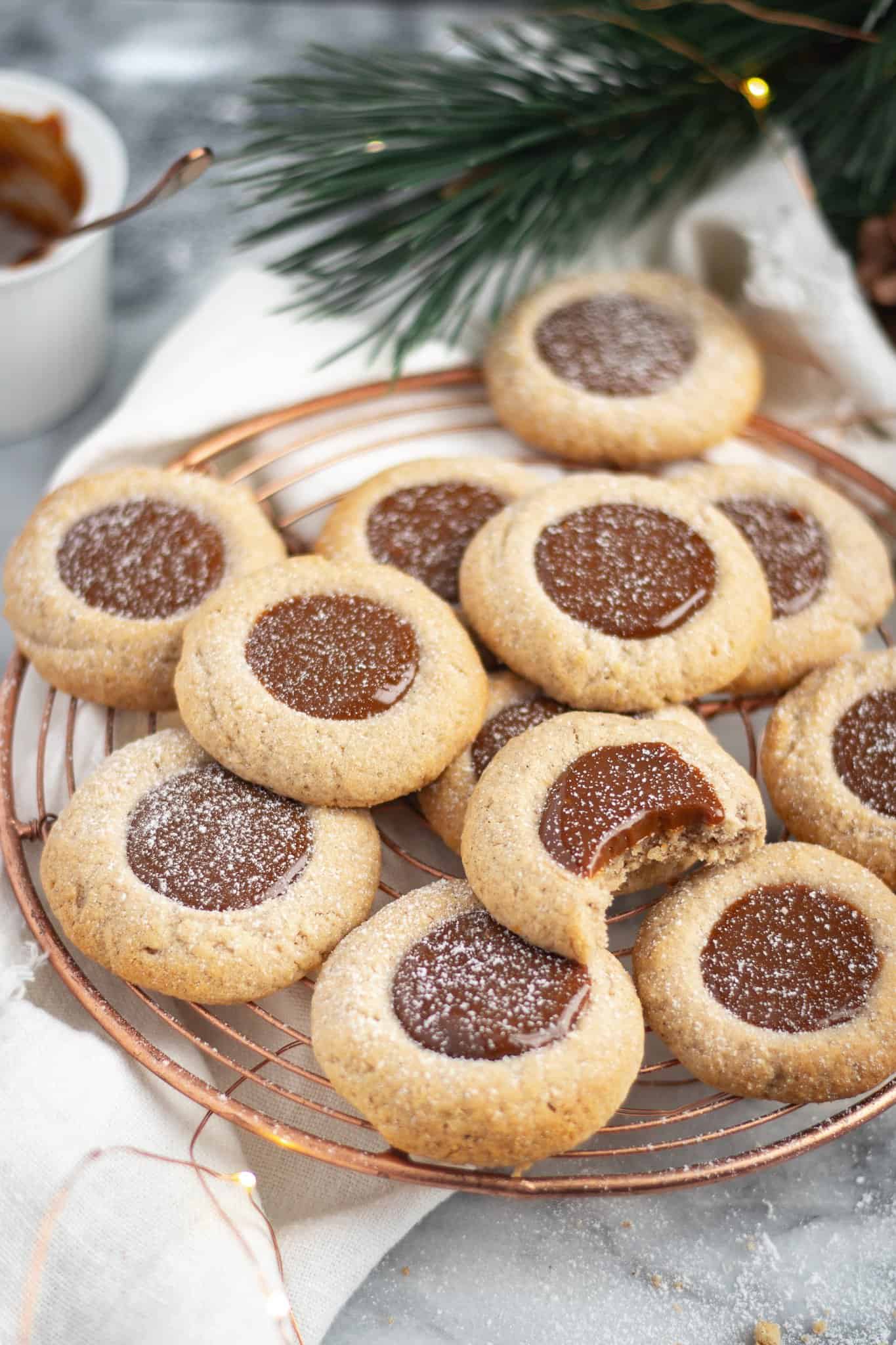
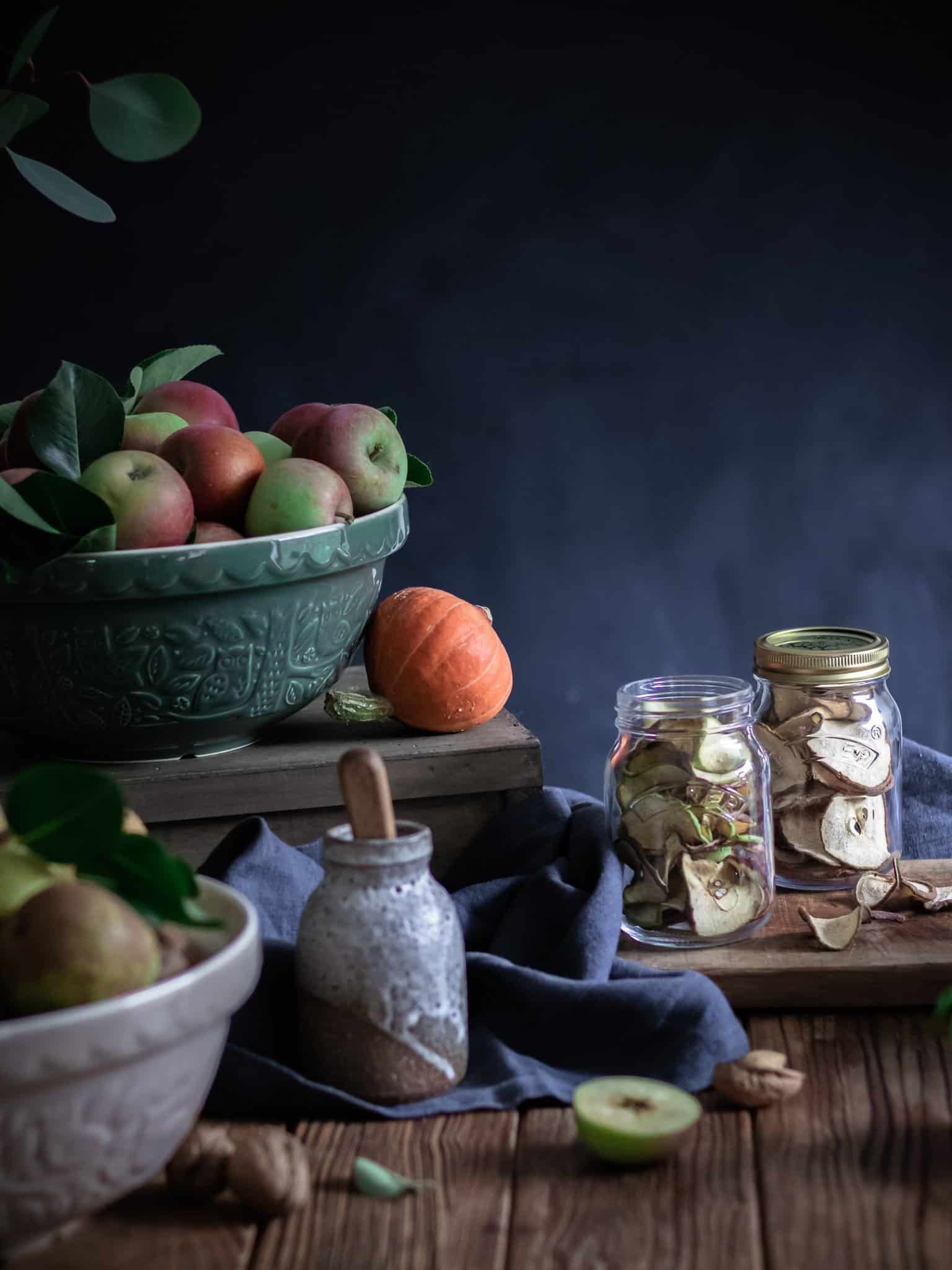
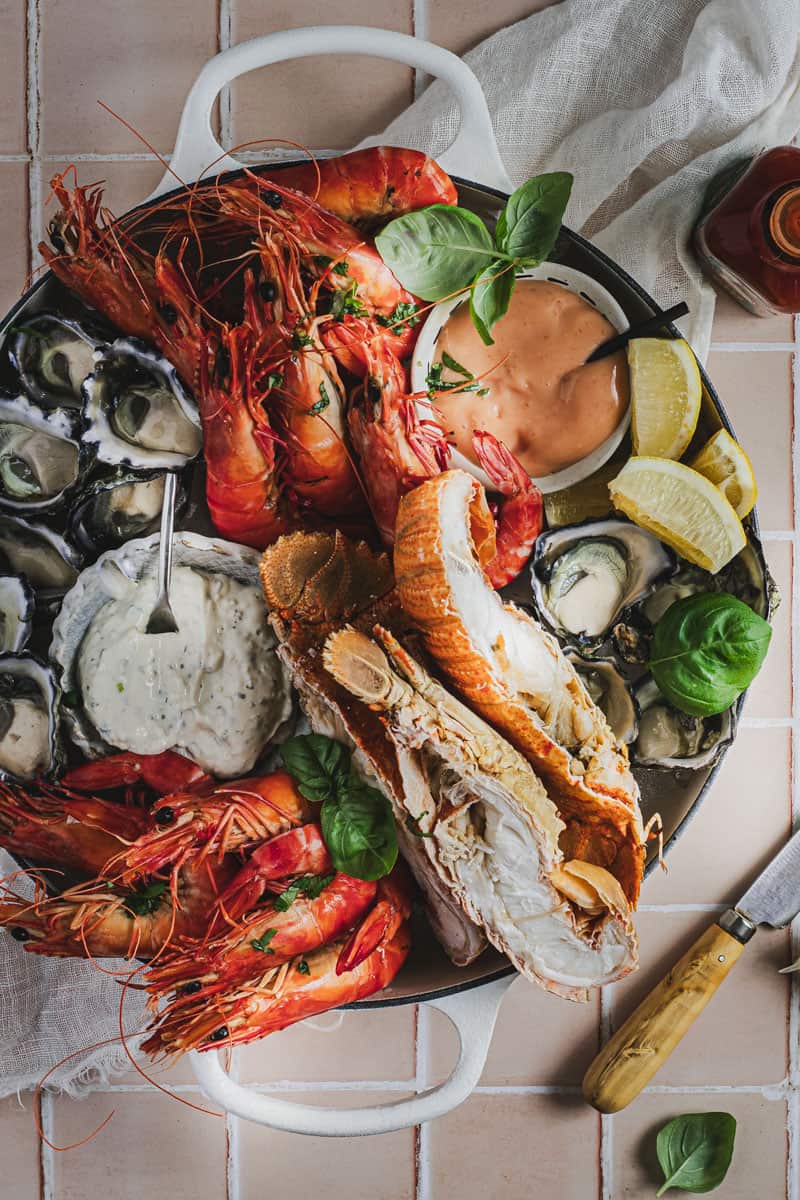
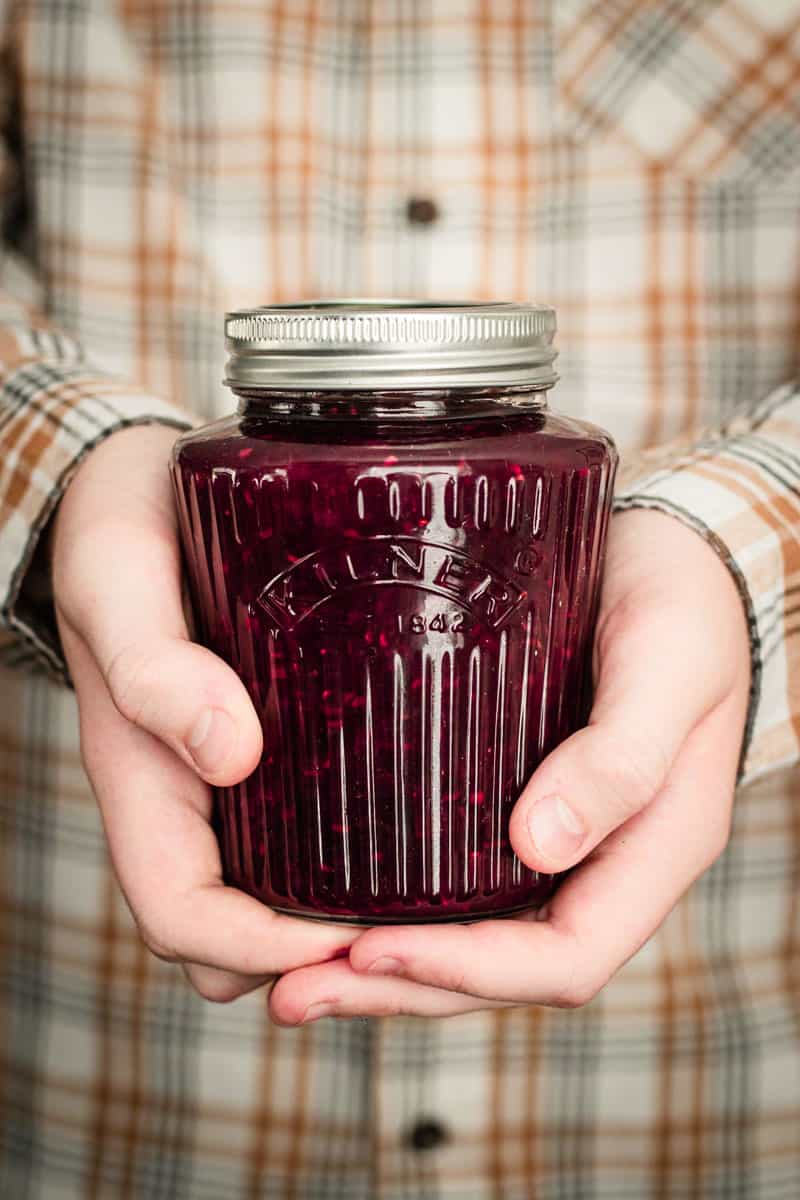
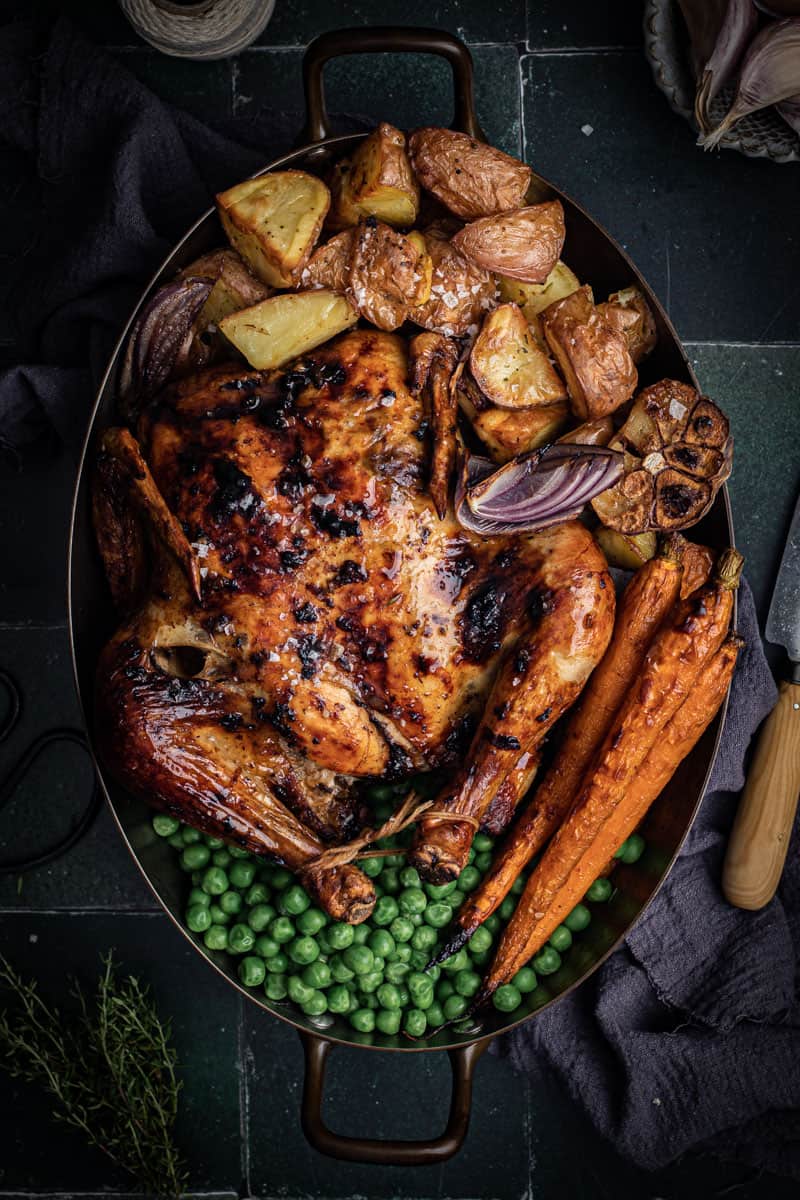
So nutty and tasty! Will definitely make again
Great to hear! Thanks so much for following along Joe x